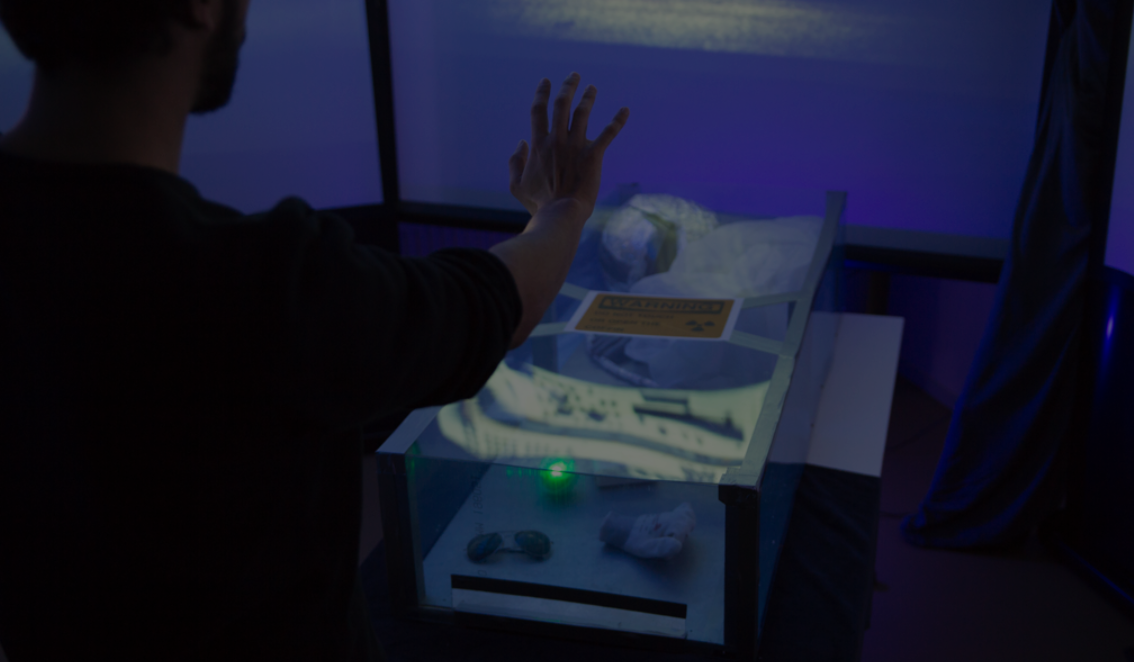Escape the Moon
Manipulate objects with your mind or get extrasensory perception in this next level escape room
Commissioned by Project Escape in 2017
Project Escape in Nijmegen was having four well-attended escape rooms at the start of this project. However, the ambition went further. Embedded Media Objects (EMO’s) were having the potential to make an escape room experience even richer. Project Escape was mainly looking for the next thing in the field of escape rooms, thus leading to the next questions:
How can Embedded Media Objects extend the experience of time and space outside the physical and temporary boundaries?
To what extent can Embedded Media Objects suggest that the visitor has hidden powers within an escape room?
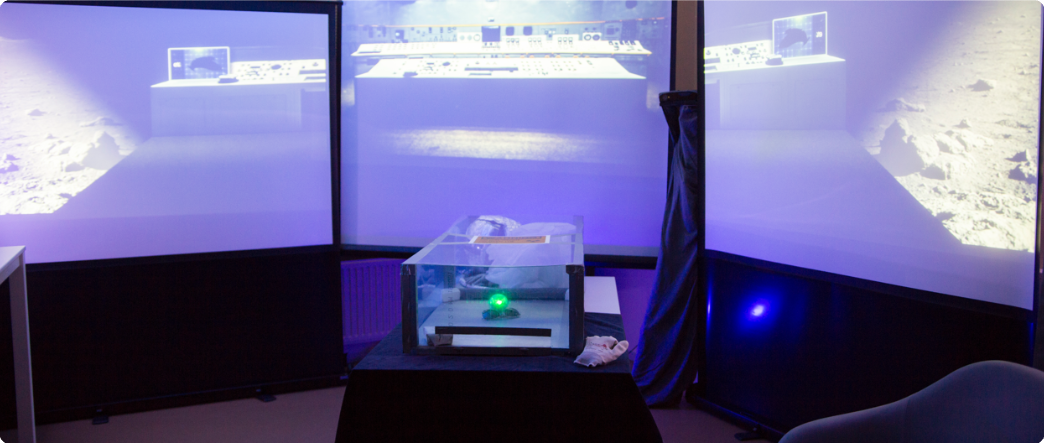
Process
The goal of this project was to design an integrative prototype within a team of five Interaction Design students. EMO’s would extend the context beyond the boundaries of the physicial location which made this a complex project. Besides this the target group of an escape room is very diverse with different knowledge and levels of experience of the end users. This led to an opportunity design and therefore the use of the iterative 1:10:100 design thinking method.
-
First iteration
Within the first iteration (the ‘1’, one week), based on field- and literature research, we designed a concept of giving each participant individual hints through Google Glass to enhance collaboration. To validate the concept we designed three different prototypes en tested it with the target group.
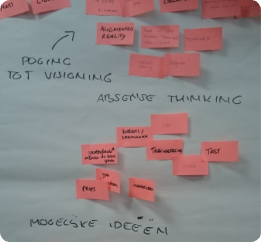
My specific role in this iteration was to design a storyboard and facilitate the test. We discovered that collaboration inside an escape room is interesting, but it is also very complex: a lot depends on the kind of users in the room itself.
After presenting it to the client we also learned the client’s goal was to use as little visible technology as possible. This was a typical challenge that made me so excited!
People didn’t understand that hints were individual nor crucial and assumed that everyone saw the same thing
-
second iteration
In the second iteration (the ‘10’, two weeks) we thus formulated a new research question based on our previous learnings.
With the help of Embedded Media Objects, how can you create the illusion that participants in an escape room have super powers, without visible technology?
With further literature research and the use of different design techniques, such as affinity diagramming, we designed a new concept again based on collaboration due to its interesting potential. It was really hard to get to this second concept, because while ideating we all got stuck with the words “yes, but…”. Therefore I facilitated a group sketching moment with my team and used the six hats method to help us think outside the box.
-
... and that's when the second concept grew!
-
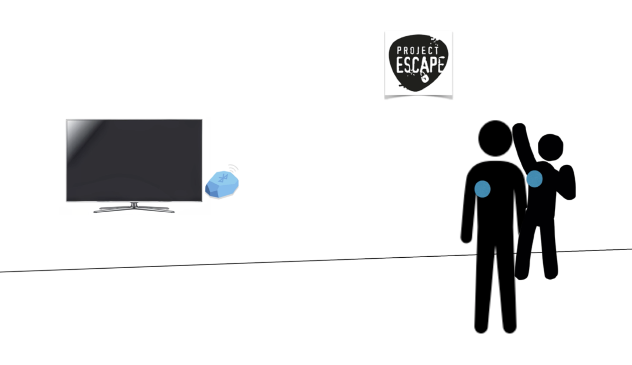
We created an illusion of superpowers with the use of Beacons inside buttons and used them as wearables. Two participants with the same Beacon functionality unlocked a superpower functionality, for example starting a TV screen when both standing next to it. To validate this concept we developed a fake escape room inside an experience lab. In this lab it was possible for us to fake the scene (Wizard-of-Oz-prototyping) and watch participants test our escape room without them seeing us. My specific role in this was to find participants and facilitate the test.
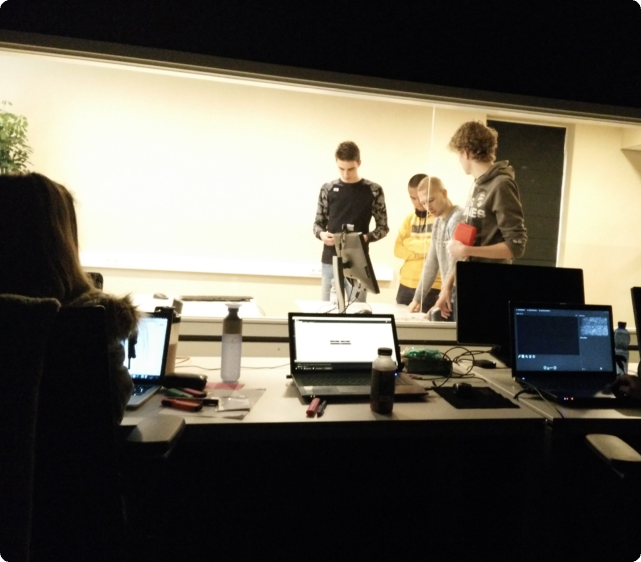
The participants thought it was fun, but they didn’t get that they had to couple up to unlock a kind of superpower
Last iteration
In the last iteration (the ‘100’, four weeks) we scoped the project down to two specific superpowers and again formulated a new research question.
In what way can a player in an escape room experience the superpower psychometrics or telekinesis while using an interactive object?
Cool, but what did the target group know and think about those kind of superpowers? What did they associate it with? To gain more insights and inspiration we organised a co-creation session in which we drew storyboards, made associations and mindmaps together with twelve participants. And of course, we just talked... and observed. And laughed. Based on this session and further research, we came to an answer to our research question. We wanted to give participants the experience of having superpowers through interactive objects like the Sphero and Kinect.
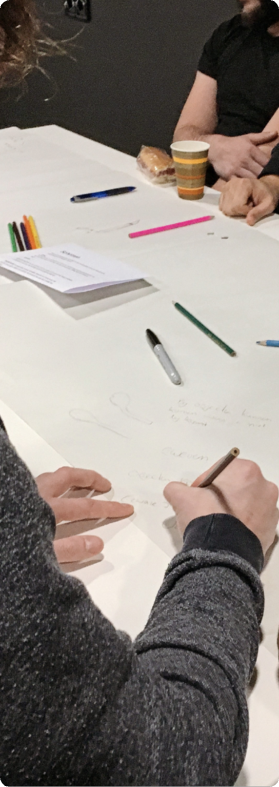
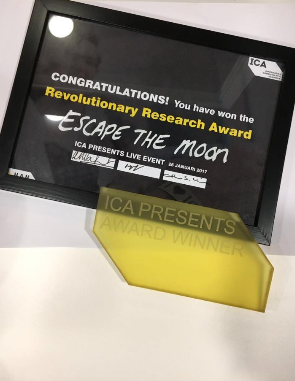
This project won the Revolutionary Research awards at ICA Presents live event from the Hogeschool van Arnhem en Nijmegen in 2017
Meet Ava in this 'Warped Reality'
I can hear you asking, "So what is this escape room about?" Let me explain:
You and your friend crashed on the moon and are looking for a way to return to earth. You find a mysterious spaceship about which you knew it had disappeared from the radar once you were a toddler. It is up to you and your friend to get the abandoned old ship working before your oxygen in your space suit runs out.
In this escape room you have to discover that each of you has his own superpower. The one with Telekinesis can move the Sphero with gestures inside a coffin. The goal is to push the elements inside the coffin out of it with the Sphero. Once you get it out, the other player can grab it to unlock videos which gives you hints through visions about what to do next, until you escaped.
The gestures are captured by Ava, the Kinect. We made her a part of the story; she was an iPad with eyes and voice for guidance. Therefore we made it possible to hide the Kinect and give hints 'via Ava' if players got stuck.
To promote this project I designed a video, poster and brochure.
Watch productvideo (dutch)My key learnings
- Learn to know mental models by iteratively test, test and test
- Fake it till you make it
- Trust yourself as well as your team members
- Stop saying "yes, but" - instead use "yes, and"
- Try to know every possible scenario that could happen during complex tests like these, so you can anticipate on it right on time
Next case
